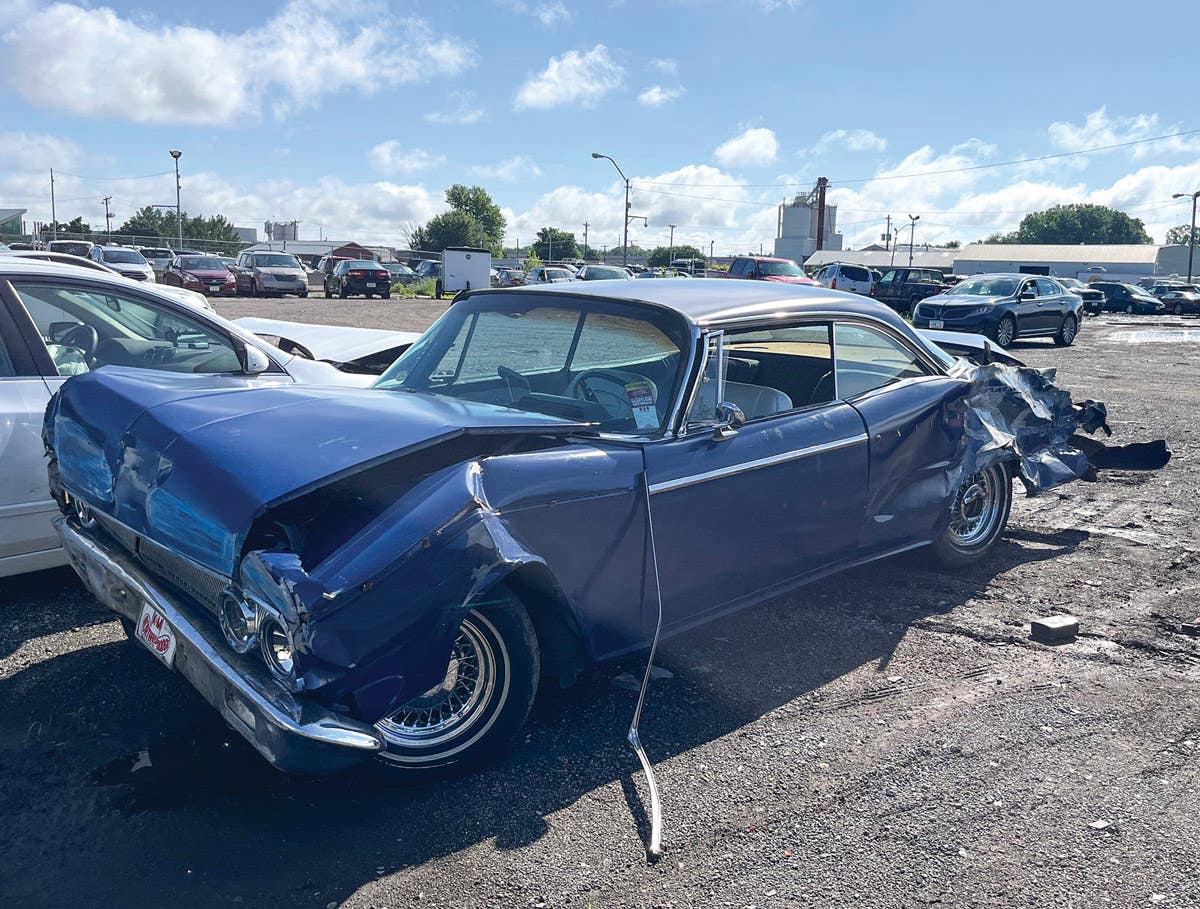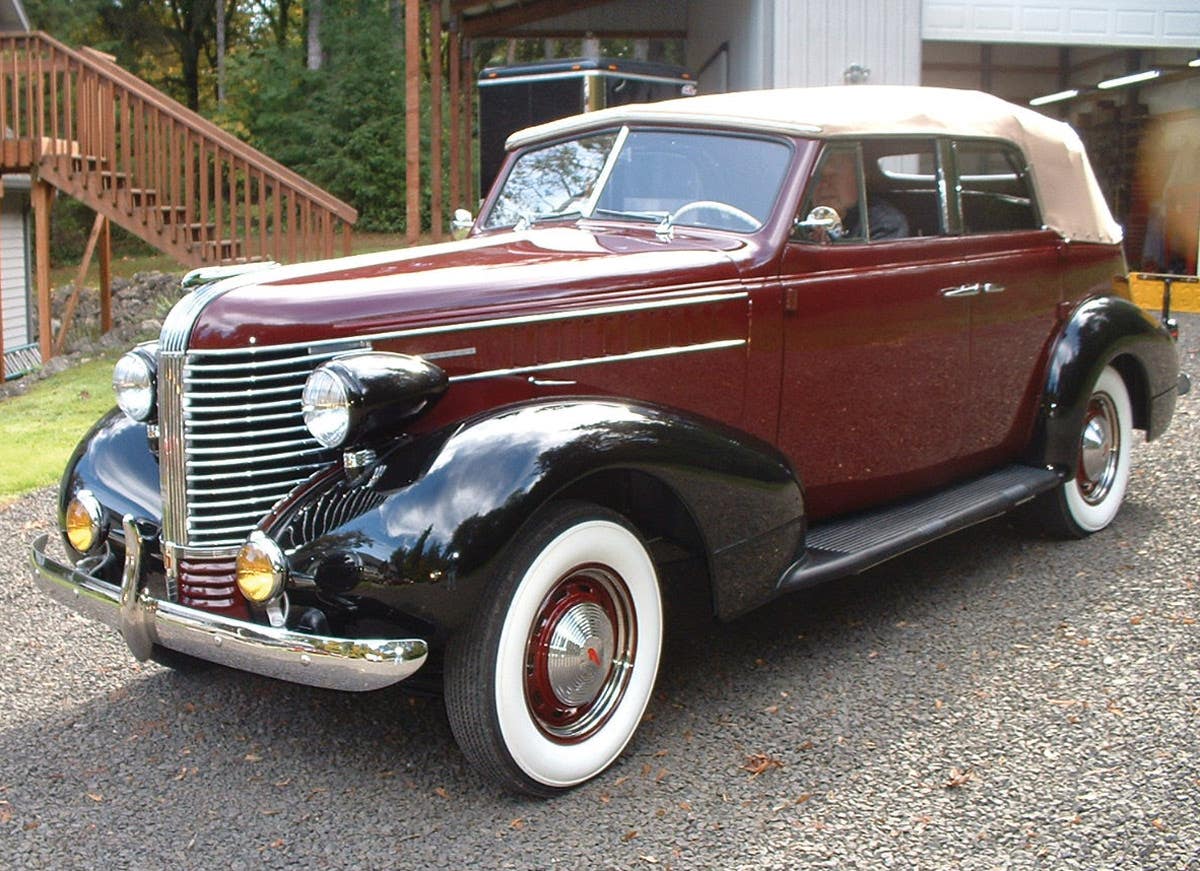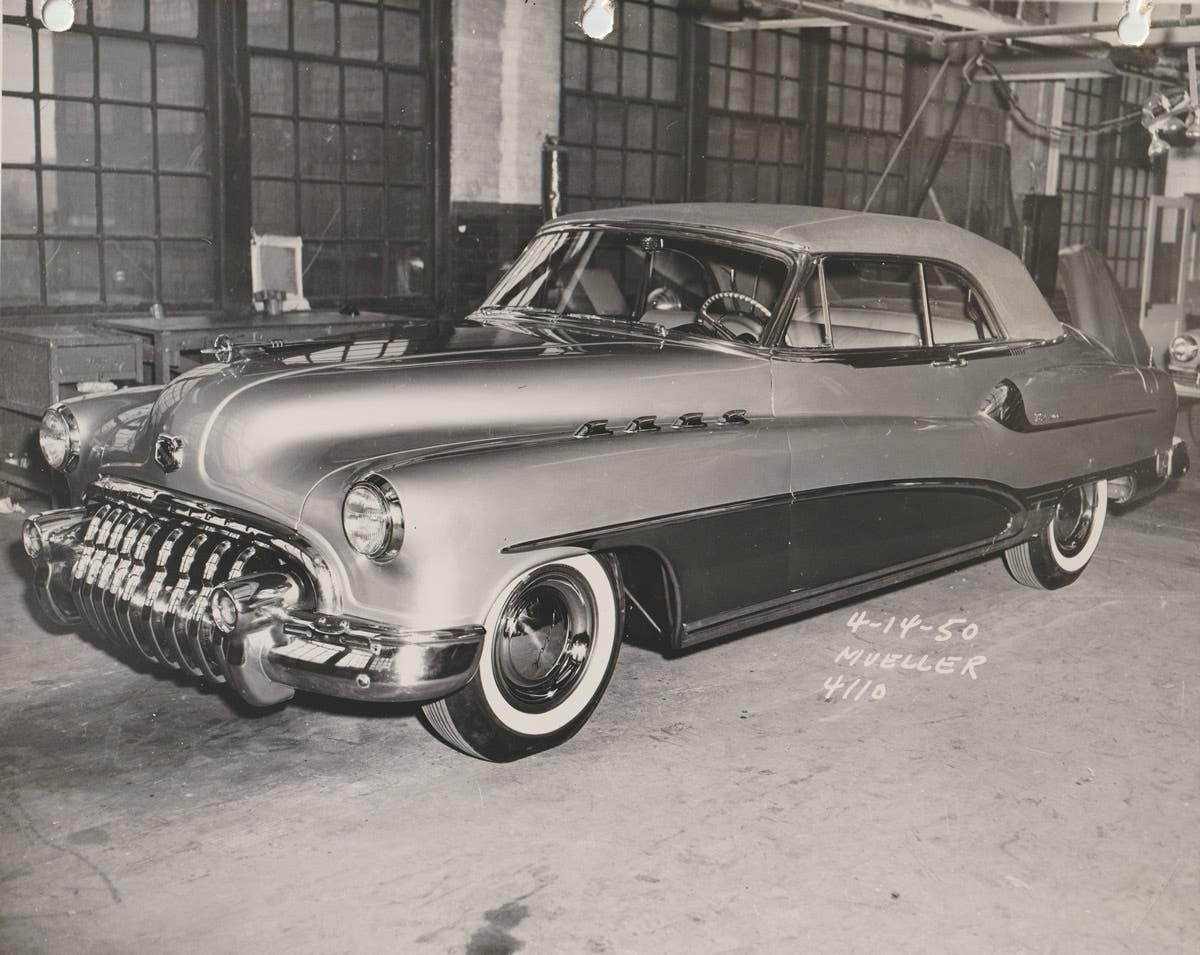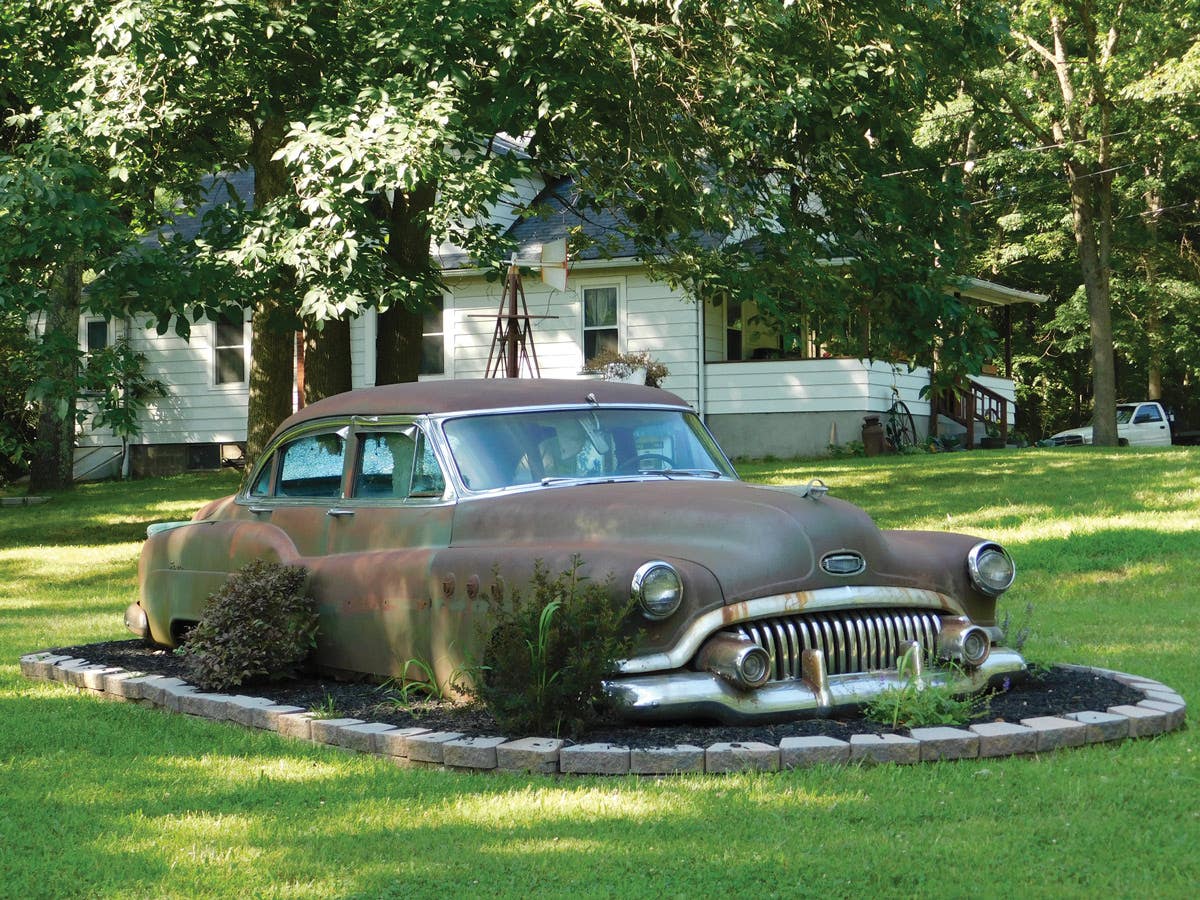Car of the Week: 1959 King Midget
King Midgets were the undisputed “Kings” of the low-budget cars, with one-cylinder engines, two seats, a removable canvas top and not much else. They were originally the brainchild of Claud Dry and Dale Orcutt, who made it their mission to build the most affordable car on the market. But to guys like Dick Russ, the King Midgets are stll 10 gallons of fun in a half-pint package.
So, you’re a former flight engineer for a major airline, you worked for many years with the space shuttle program as a launch engineer, then you started your own company that makes and sells airplane parts. You love flying and buzzing around in your own plane. You are also an authority on E-Type Jaguars, have restored a bunch of them yourself, and even authored a book on the subject.
But now you are officially retired and you need an old car to keep you busy. You have the time and finances to pretty much buy anything you want, and you were a rocket scientist, for gosh sake, so you know how to work on pretty much anything you buy.
And the old car you desire most is … a King Midget? Get outta here!
Dick Russ knows it might sound crazy, but that’s his story. Somehow, he just never got over his fascination with King Midgets — the quirky little bargain basement machines that first appeared back in 1946. They were one step up from a go-cart, really, and there weren’t many of them around. But Russ, a resident of Oklahoma City, never forgot the first time he saw one, and he never outgrew his desire to own one.
“In high school I had a friend who had one,” he said. “His parents let him have one because they thought he couldn’t get into any trouble with such a little car.
“I was just fascinated by the car, and I just thought it was neat because it was more than I had!”
Years later, Russ said he stumbled upon a story about the King Midget in a magazine while he was flying to a job interview following college.
“I saw this article and thought, ‘Boy, that would be fun. I’d really like to have one of those,’ but I was just out of school, and I didn’t have any money.”
The time was finally right in early 2009, however. Russ did some snooping around and discovered that there were some old King Midgets within driving distance of his home.
“I actually found about six of them, and there was one in Shawnee,” he said. “So we drove out to Shawnee and looked it, and it was really rusty. There wasn’t much left of it … When my wife saw it she said, “You’re not really considering buying that, are you?’ And I said, ‘I just did!’”
Russ ponied up $2,500 for the remnants of his 1959 Model 3, which is a lot more than any of the King Midgets cost new during their production run from 1946-’69. They were the undisputed “Kings” of the low-budget cars, with one-cylinder engines, two seats, a removable canvas top and not much else. They were originally the brainchild of Claud Dry and Dale Orcutt, who made it their mission to build the most affordable car on the market. The pair began selling the cars as kits out of Athens, Ohio, in 1946. The kits were basically a pattern for sheet metal (if you wanted any), a steering assembly, suspension parts, and a frame to mount everything on. No engine was included, but if you could find a one-cylinder engine lying around, you were in business.
In 1951, the “Model 2” cars were made available as either kits or fully assembled cars with a 7.5-hp Wisconsin engine. The Model 2 cost about $500 and had a three-spoke steering wheel and brown plastic upholstery. Automatic transmission was optional, as was electric starting and a reverse gear, turn signals, Plexiglas windows, wider tires and a few other “upgrades.”
The car probably most familiar to the public, the “Model 3,” arrived in 1957. Its design remained largely unchanged for the next dozen years, but the cars did get nicer over time. Aluminum doors replaced the previous wooden doors, four-wheel hydraulic brakes slowed you down, the engine was upgraded to 12 hp in 1966 and a Borg-Warner clutch was introduced in 1967. A windshield wiper, radio, floor mats and safety belts were added. Several other colors were added to the “California Cream” that had been the only choice in the early years. Canvas tops could be ordered in black or white, and not just brown.
Dry and Orcutt changed the name of the company to Midget Motors Corp. in 1956 and continued to run the operation for 10 more years before selling out to another ownership group. The company only lasted another three years before low sales and growing government safety regulations were too much to overcome. The good news is that, even though King Midgets haven’t been available since 1969, the company has continued to produce parts under the King Midget Parts Co. banner, and buffs like Russ have been able to get some of the King Midgets back on the road over the years.
“It’s interesting that about 90 percent of all Midget parts are still available, and the other 10 percent you can get from NAPA,” Russ said. He eventually replaced all the sheet metal and floor pan. “I started from the frame up,” he said. “All the body parts are new, but everything else is original.”
Russ said he got a good break immediately when he found the original engine still ran.
“The car was totally dilapidated, and fuel tank was all rusty. I did the best I could to flush it out a little. I put some gas in it and that silly old Wisconsin engine started right up! I couldn’t believe it.”
After that, Russ built himself a homemade rotisserie so he could turn the car over and get it off the ground while he worked on it. From there, it didn’t take him long to get the car back to show quality condition. “We brought it home in February, and I had it all ready in September,” he said.
Russ modified a few things along the way, designing his own heavier-duty wiring harness, swapping the balky generator out for an alternator, fabricating some nylon bearings for the steering column, and upgrading the interior to wool and leather. The original faces on the instrument panel are no longer available, either, so Russ fabricated his own. The finishing touch was a coat of fancy and ultra-tough Jet-Glo aircraft paint, courtesy of some of Russ’ friends in the airplane business.
“I really tried to keep it as stock as I could,” he said. “I have had some people come and look at it and they’ve said, ‘This is the way King Midget would have made its cars if they could have.’”
Along the way, Russ has gained an even greater appreciation for how perfectly simple and frugal the cars were. Not only did the King Midgets get more than 70 mpg, they were exceptionally durable and easy to work on. “They were just so interesting,” he said. “If you look at them, you can see the bumpers were actually made from sliding glass door thresholds that were kind of bent around on the ends, and they are beautiful bumpers. That’s the way they did things.
“The steering wheels were from Crosleys. The internal gearing box is a rack-and-pinion setup, really, in a crude sense, but they took the large gear, cut it in half, and then you had a steering gear for two cars. It’s the ultimate in simplicity … And the transmission is just phenomenal from an engineering standpoint. It’s so simple. You have two belt drives with two forward gears and one reverse. The belt drives come off the engine — one for low speed and one for high — and then when it gets up to speed, at about 15 or 16 mph, there is a ball that slides and automatically puts it in the higher gear. It’s just incredible, and it works! It’s so simple, and they never failed.”
Russ says he is the third owner of the car, which was originally purchased by a Texas driver. Since its restoration, the King Midget has only traveled about 125 miles, but Russ says they are all memorable. In one of his first trips, he broke down about a mile from his house with his wife in the car.
“She was wearing high heels at the time,” he said. “She wasn’t really dressed for that walk home.”
He plans to take the car to and from the airport for trips in his plane, and for whatever other joyriding opportunities come up. The King Midget will likely also make a few show and old car hobby event appearance. The car was recently on display for an event at the Petersen Museum in Los Angeles.
“I don’t like trophies. I built this car specifically for my wife and I to have to drive to the airport," Russ said. "And I’m going to drive that car more than anything. Shoot, it gets 80 miles per gallon, why not drive it?”
When Russ does pull over for gas, however, he’ll need to be ready to recite his car’s life story. The King Midget is nothing if not a conversation piece.
“Oh yeah, we’ve been at the filling stations, or wherever, and someone will come over with their cell phone and say, ‘Can I take some pictures of this?’ It’s fun."
“Most people have never even heard of a King Midget.”
SHOW US YOUR WHEELS!
If you’ve got an old car you love, we want to hear about it. Email us at oldcars@aimmedia.com
*As an Amazon Associate, Old Cars earns from qualifying purchases.







